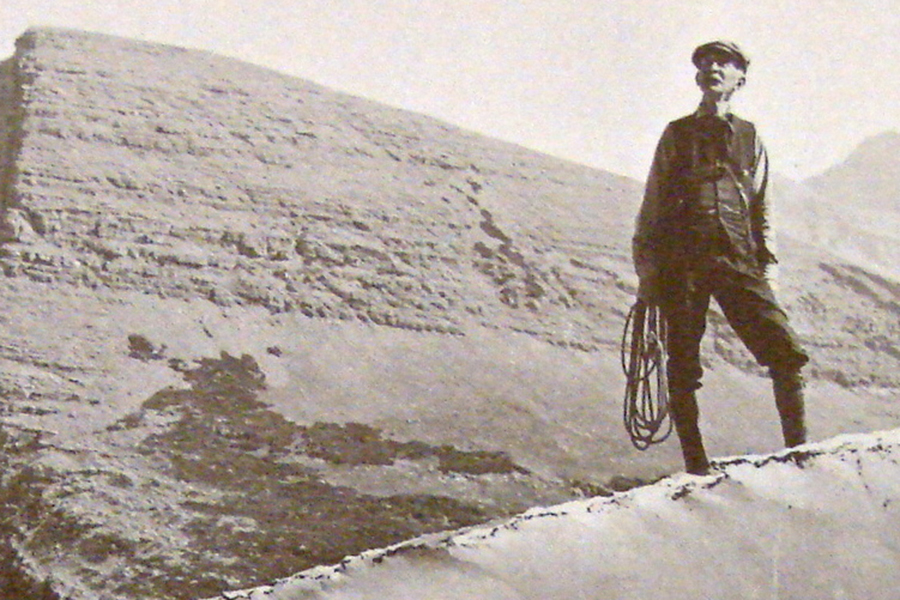In 1975, Hugh Grinnell was on a family vacation in Seattle when he went down to the railroad depot. Hugh was a bit of a railroad enthusiast and was especially fond of the Great Northern Railway, a fandom that was born when he received a model of one the railroad’s bright orange and green freight cars as a boy.
“I just fell in love with Rocky,” Hugh said of the Great Northern’s surefooted goat mascot inspired by Glacier National Park’s iconic mountain climbing residents. “I was really obsessed with that goat as a kid.”
So it was on that family vacation that Hugh decided to head down to Seattle’s King Street Station to see if he could spy any old Great Northern cars. As luck would have it, there was an entire Great Northern passenger train sitting there and as Hugh walked along the train inspecting each car he came across one with a familiar name: Grinnell Glacier.
Hugh was confused why his surname was on the side of a passenger car and why a glacier had been named after his family. After the trip, Hugh did some research and learned that Glacier Park’s Grinnell Glacier was named after a man named George Bird Grinnell, a well-known conservationist in the late 19th and early 20th centuries and his sixth cousin.
George was born in Brooklyn, New York in 1849. His father sent him to Yale University, but George didn’t take to school and later took a trip out west where he discovered a passion for the outdoors. In 1876, he became an editor of “Forest and Stream” magazine. As part of his job, George took annual trips to the west and, starting in the 1880s, began making trips to what is today Glacier National Park. It was during one of those early trips that he discovered the glacier that would later be named for him. Long before anyone thought of turning it into a park, Grinnell was advocating for the area’s protection, writing after one of his trips: “The scenery is wonderfully grand, the mountains high and remarkable bold … Someday it will be a great resort for travelers.” Grinnell would later be credited with being the “father” of Glacier Park.
Hugh was intrigued by the contributions of his distant cousin and tucked the association away in the back of his mind. However, the connection reemerged about a decade ago when Hugh found more information about George online and started researching the family member. Hugh, who is now 80, was particularly interested because he looks so similar to the conservationist.
In 2010, Hugh did a presentation about George at a family reunion, even going as far as dressing like the legendary conservationist. Hugh got some positive feedback from his talk, so he started traveling around giving presentations about his sixth cousin and his contributions.
Hugh’s research has been aided by the discovery of George’s writings at Yale, including his partially written memoir. Hugh used the papers to improve his presentation and has also edited them into a new book titled “The Father of Glacier National Park: Discovery and Explorations in His Own Words.” Arcadia Publishing is publishing the book in March.
“I think anyone who reads this book is going to want to strap on their boots and go for a hike,” Hugh said. “George Bird Grinnell was a real adventurer.”
Hugh will be giving a presentation about his sixth cousin at the Northwest Montana History Museum on June 26. For more information about the book, visit arcadiapublishing.com.
